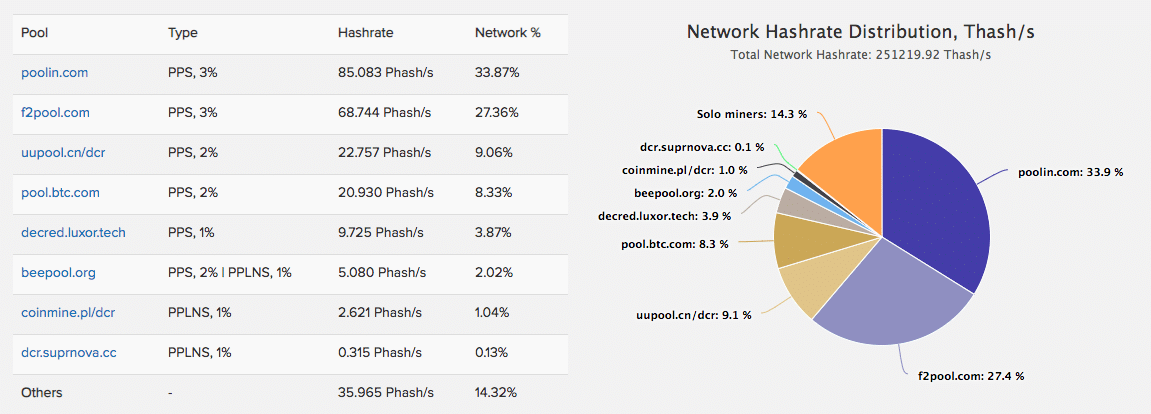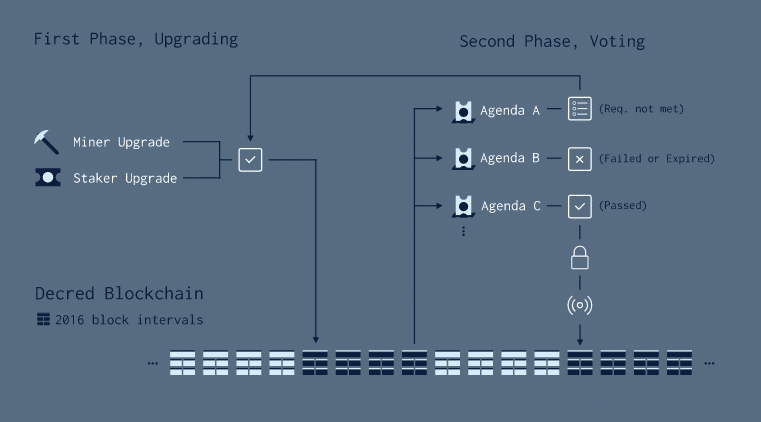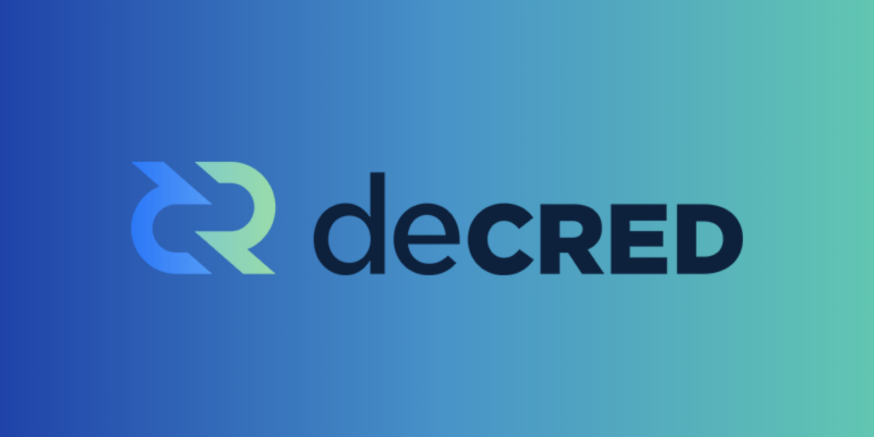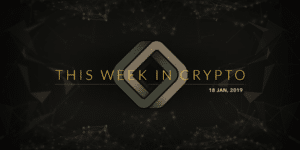What Is Decred?
Decred (DCR) is a cryptocurrency that prioritizes decentralized governance and decision making on the blockchain. The goal is a cryptocurrency that runs autonomously, with improvements voted on and enacted directly by the miners and holders of the currency.
Decred incorporates some fundamental changes from the Bitcoin protocol that it’s based on in order to accomplish these decentralizing goals.
Decred launched its mainnet on February 8, 2016, to mixed reviews from crypto enthusiasts. For some, Decred represented everything Bitcoin was supposed to be from the outset. They saw it as the pinnacle of decentralization and democratic decision making for a peer-to-peer network, allowing it to respond quickly to attacks and community requests for new features.
On the other hand, many skeptics question what Decred brings to the table that’s truly new and unique. Other cryptocurrencies have mechanisms for incorporating community needs, and it’s not entirely clear why you would choose to use Decred over a more established currency.
Decred’s developers and community believe the network’s protocol for incorporating improvements and changes will allow it to become the optimal cryptocurrency on the market in the long run. Over time, they claim Decred will be the most responsive to the needs of future cryptocurrency users, and that will make it the foremost coin based on user influence.
In this Decred guide, we’re going to cover:
- What Problem Does Decred Aim to Solve?
- Hybrid Proof of Work & Proof of Stake
- Lightning Network for Instant Transactions
- Decred Team & Progress
- Trading
- Where to Buy DCR
- Where to Store DCR
- Conclusion: Strengths & Challenges
- Additional Decred Resources
What Problem Does Decred Aim to Solve?
Decred’s developers are crypto-enthusiasts and early Bitcoin adopters, but they spotted an inefficiency in the way Bitcoin operates. As mining operations have grown, Bitcoin’s decision-making process has become more centralized, with the largest mining companies holding large amounts of power over the Bitcoin improvement process. In addition, while some Bitcoin improvements can be implemented via a soft fork, almost all improvements that involve a significant change to the Bitcoin software require a hard fork from the old blockchain.
This was on display in 2017 with the proposed SegWit2x hard fork on the Bitcoin blockchain. Debates raged, and the community was in upheaval about the future of the network. Eventually, the hard fork was called off because it didn’t have enough support from miners, institutional users, and exchanges. According to Decred, this kind of power that the miners and institutional users held over an improvement to the blockchain is counterproductive.

In the case that the community doesn’t agree on a fork, independent factions can also create their own hard forks of the Bitcoin open source blockchain. We’ve already seen this with Bitcoin Cash, Bitcoin Gold, and Bitcoin Diamond. These offshoots implement various improvements in different ways and at different speeds, fracturing the Bitcoin community every time consensus isn’t reached about an improvement.
Decred aims to reduce or eliminate hard forks, especially ones that divide the community. While a hard fork is possible on Decred, and in fact, the project recently navigated the first fully user-driven hard fork, Decred’s voting protocol makes it so that users can vote on changes before activation. Then when the vote passes, the changes go live.
Hybrid Proof of Work & Proof of Stake
Decred accomplishes its voting protocol on the blockchain using a hybrid design that combines proof of work and proof of stake. The basic principle behind the hybrid system is each block must be mined with the correct nonce and ratified by at least three verifiers. The hybrid system mitigates the weaknesses of proof of work or proof of stake individually. Miners still receive block rewards and staking verifiers also receive a small reward.

The mining is straightforward and works like Bitcoin with processors competing to find a nonce that lowers the hash below the difficulty threshold.
The proof of stake system is open to anyone who owns DCR. Using your DCR, you can choose to buy tickets that allow you to participate in the proof of stake system. A miner will have to include your ticket as part of a block, and since each block can only contain 20 tickets, you may have to wait (or pay a fee to include it earlier). Once mined, your ticket will be considered “immature” and held outside of the lottery pool until 256 blocks (about 20 hours) have passed.
After that, your ticket enters the pool and you wait for it to be chosen. Decred is designed so you have a 50% chance of being chosen within 28 days and a 99.5% chance of being chosen before your ticket expires (around 4 months). Once chosen, you’ll help validate a block, and you’ll receive the price of the ticket plus a staking reward for participating.
The staking process encourages longer-term investment in the Decred project because your DCR will be in the system tied up for a few weeks while you’re staking. Luckily, contrary to other proof of stake systems, you won’t need to keep your computer on for the whole time your ticket is in the pool. Instead, you can join a staking pool that will vote on your behalf should your ticket be chosen and return the dividend to you.
Ratifying an Improvement to the Protocol
Using a combination of mining and staking means everyone gets a vote when it comes to improvement proposals and forks in the Decred blockchain. Anyone can submit a proposal for improvement, and that proposal will pass through the Decred Assembly first, a group of Decred users who have been vetted and voted into the council.
This proposal mechanism changed with the implementation of Politeia in October 2018, however. With Politeia, the community is able to vote on which projects receive funding from the block reward and are worth pursuing.
Once an improvement project has been fully developed and tested, it’s added to a new version of the Decred source code as “dormant code” with no activation. The first step in voting on the new improvement requires that the supermajority of nodes on the network update to the new version of the software that contains the dormant code.
Voting on a new initiative begins when 95 percent of the past 1000 blocks have been mined with updated code and 75 percent of the verifying votes on the past 2016 blocks have the updated code. As soon as the number of nodes reaches this “upgrade threshold,” voting begins.

Voting lasts 8064 blocks (around 28 days), and it involves both the miners and the stakers (ticket owners) choosing yes, no, or abstain. The voting ends when it reaches 40,320 votes or 8064 blocks transpire. An agenda item requires a 75 percent majority to pass. If the yeas or nays do not reach 75 percent, the vote is re-started at the next voting period of 8064 blocks and is re-voted until a majority is reached or the agenda item expires.
When the community accepts an agenda item, it immediately becomes active. Since it was already dormant in the updated code, the vote has the ability to activate it immediately. All the governance data and supporting information exists off-blockchain with Decred’s new Politeia project to make governance open source and freely accessible.
Lightning Network for Instant Transactions
Decred is also implementing Lightning Network. This is an improvement that multiple cryptocurrencies have explored, including Bitcoin. Essentially, Lightning Network operates as an off-blockchain way to settle payments and reduce network requirements and processing speeds. It requires two users that regularly do business to set up a third account that’s a locked box into which they each put an equal amount. When the two users want to transact with one another, they simply send each other promissory notes changing the balance of funds in the box.
For example, Alice and Bob each contribute 10 DCR to a Lightning Network box, for a total of 20 DCR in the box. If Alice wants to pay Bob 2 DCR, she can send Bob a note updating the distribution of their locked box to 8 Alice, 12 Bob. Alice doesn’t need to send this note on the blockchain. And, Bob and Alice can freely transact back and forth within a margin of 20 DCR before they need to add anything to the blockchain beyond the initial transactions that funded the box.
Since it’s based on promissory notes, Lightning Network payments are instant and don’t rely on the block time for verification. They can also be micropayments of fractions of a coin. Additionally, taking the transactions off the blockchain allows for greater scalability as the blockchain has to process fewer transactions.
[thrive_leads id=’5219′]
Decred Team & Progress
Moreso than many other blockchain projects, the community manages Decred. With the implementation of Politeia, the project doesn’t have a traditional leadership team.
Since its origin in 2016, Decred has accomplished quite a lot. The development team created blockchain-based timestamps in Q2 2017, completed on-chain atomic swaps with Bitcoin and Litecoin in Q3 that year, and as you know, launch Politeia in October of 2018.
Some of the next milestones on the roadmap include:
- Android wallet and Trezor integration
- Lightning Network
- Decrediton Politeia integration
- Privacy functionality
- Decentralized autonomous entities
Competition
Other than traditional cryptocurrencies, like Bitcoin and Litecoin, Decred is competing with projects that have a decentralized governance focus. Aragon is one example of a governance-focused crypto. However, the Decred community is more concerned with the project becoming the de facto currency whereas Aragon is centered around decentralized autonomous organizations (DAOs).
Trading
The crypto market is volatile, but the price of DCR has been even more volatile than the norm. After launching in February 2016, the price slowly fell in BTC and USD value over the next year. At the start of 2017, though, the price steadily rose, reaching an all-time BTC high of ~0.0178 BTC. During that six month period, DCR grew 38x in terms of BTC and 95x in USD. It’s unclear what may have caused this dramatic rise in price.
After that impressive run-up, the price fell until the great bull run at the end of 2017 / early 2018. At that time, DCR reached an all-time USD price of over $120. During the bear market of 2018, DCR actually bucked the downward trend in April/May almost touching its previous high levels. Once again, there wasn’t any noticeable news coinciding with this price movement. Since then, the price has steadily fallen and currently sits at about $16.50 (~0.00463 BTC).
Strangely, development updates don’t seem to have an effect on the DCR price. Instead, you may want to focus on Decred adoption if you’re looking for good investment opportunities down the road.
Where to Buy DCR
You’re best options for purchasing DCR are Binance and Bittrex. You can trade BTC for it on both platforms. It’s also available on UPbit as a trading pair with KRW.
Where to Store DCR
The ideal place to store your DCR is in the Decrediton wallet. It’s a Graphical UI, so it’s easier to use than a Command Line Interface and is available on Mac, Linux, and Windows operating systems. Make sure you stake your coins if you use this wallet.
You also have Exodus, Coinomi, and Atomic at your disposal as third-party options.
As always, a hardware wallet is a great choice if security is your number one priority. The Ledger products support DCR, and the Trezor will have a Decrediton integration sometime soon.
Conclusion: Strengths & Challenges
Decred’s largest strength is its community. The founding development team is made up of former developers from major crypto projects, most notably the developers of btcsuite, a version of Bitcoin written in the Go programming language. Btcsuite’s open source Go code has been used for other projects as well.
If the team can build great features that extend Decred in a way that makes it more useful for community members, then Decred adoption will continue to grow as good governance drives good decisions. However, if Decred’s community fails to engage or organize for rapid developments, Decred could find itself quickly overtaken by new, exciting cryptocurrencies that offer better features out of the box.
Editor’s Note: This article was updated by Steven Buchko on 1.20.19 to reflect the recent changes of the project.
Additional Decred Resources
Never Miss Another Opportunity! Get hand selected news & info from our Crypto Experts so you can make educated, informed decisions that directly affect your crypto profits. Subscribe to CoinCentral free newsletter now.










